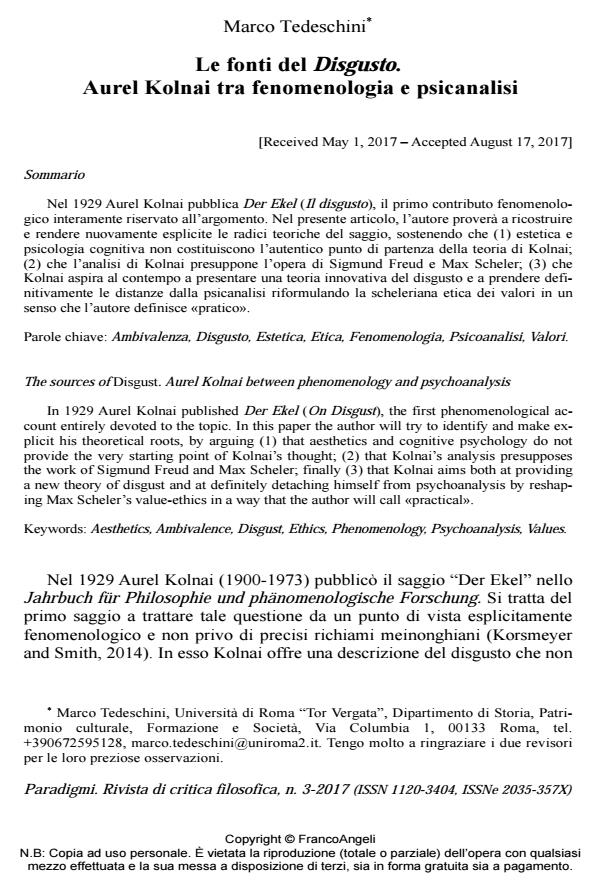The sources of Disgust. Aurel Kolnai between phenomenology and psychoanalysis
Journal title PARADIGMI
Author/s Marco Tedeschini
Publishing Year 2017 Issue 2017/3
Language Italian Pages 16 P. 105-120 File size 195 KB
DOI 10.3280/PARA2017-003008
DOI is like a bar code for intellectual property: to have more infomation
click here
Below, you can see the article first page
If you want to buy this article in PDF format, you can do it, following the instructions to buy download credits

FrancoAngeli is member of Publishers International Linking Association, Inc (PILA), a not-for-profit association which run the CrossRef service enabling links to and from online scholarly content.
In 1929 Aurel Kolnai published Der Ekel (On Disgust), the first phenomenological account entirely devoted to the topic. In this paper the author will try to identify and make explicit his theoretical roots, by arguing (1) that aesthetics and cognitive psychology do not provide the very starting point of Kolnai’s thought; (2) that Kolnai’s analysis presupposes the work of Sigmund Freud and Max Scheler; finally (3) that Kolnai aims both at providing a new theory of disgust and at definitely detaching himself from psychoanalysis by reshaping Max Scheler’s value-ethics in a way that the author will call «practical».
Keywords: Aesthetics, Ambivalence, Disgust, Ethics, Phenomenology, Psychoanalysis, Values
Marco Tedeschini, Le fonti del Disgusto. Aurel Kolnai tra fenomenologia e psicanalisi in "PARADIGMI" 3/2017, pp 105-120, DOI: 10.3280/PARA2017-003008